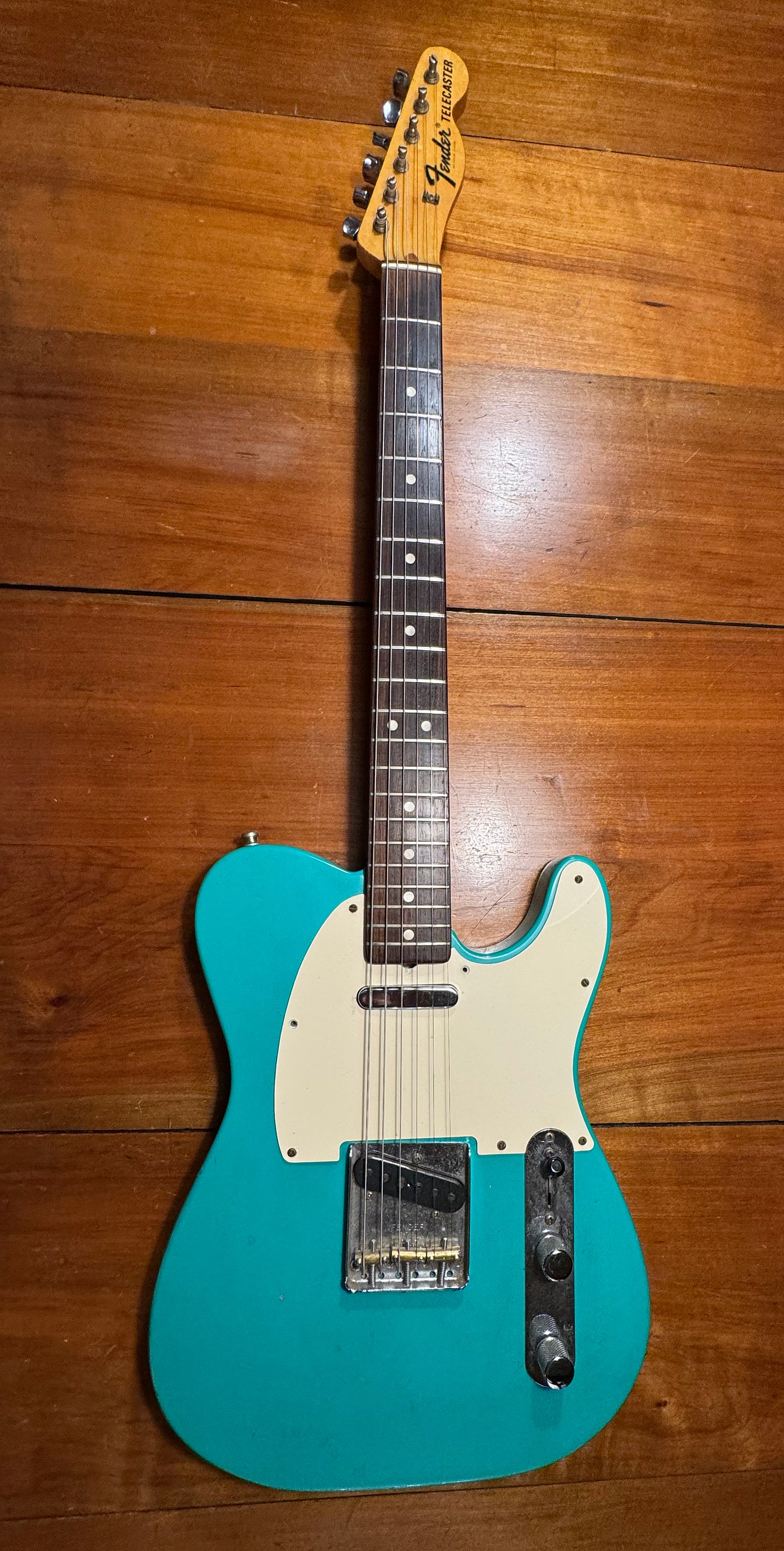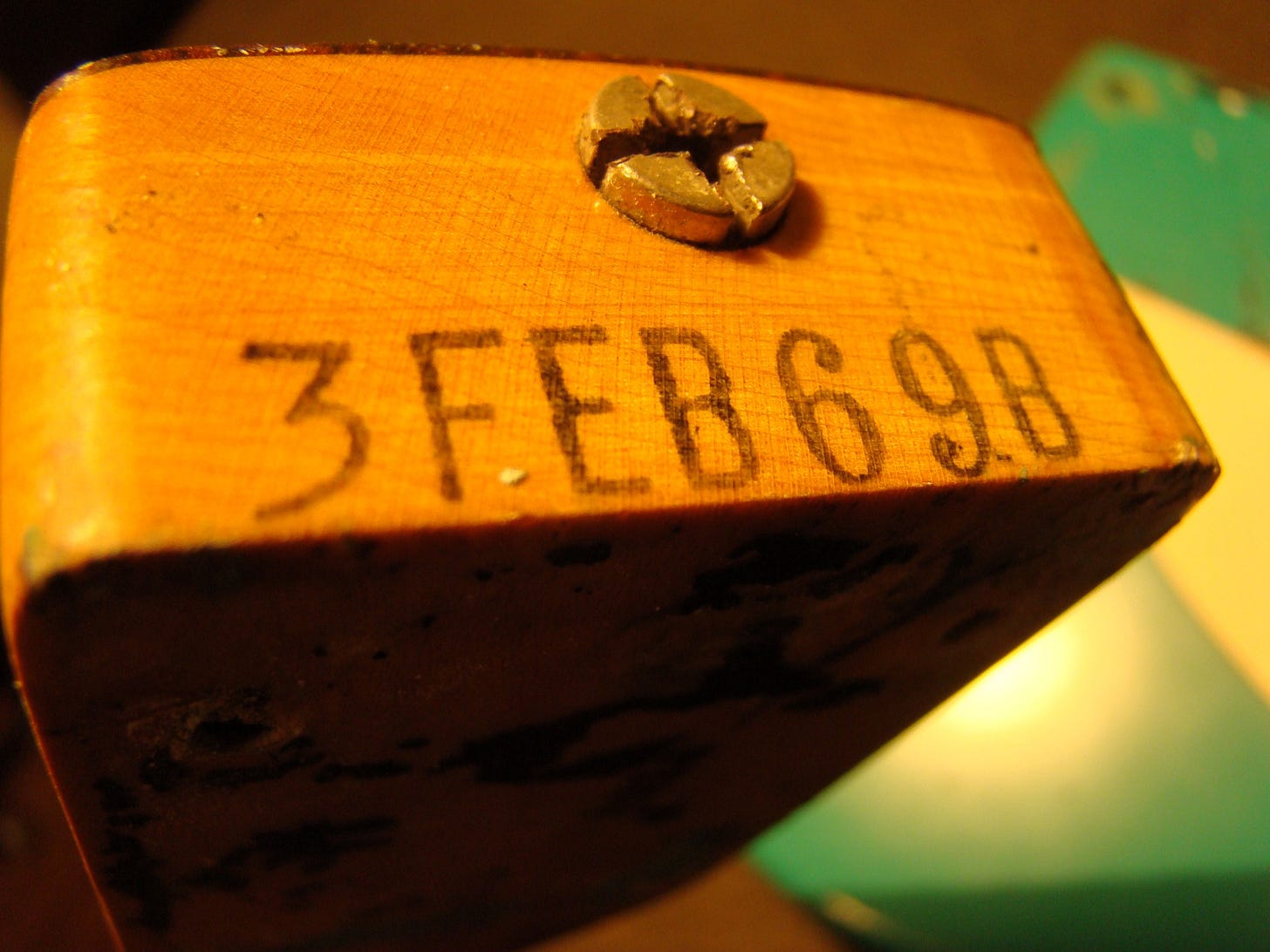First, there have been some additions to the upcoming run of shows. Here’s the full list:
September 26 Iron Horse (Northampton, MA)
September 27 Kennett Flash (Kennett Square, PA)
September 28 Listening Booth (Lewes, DE)
September 29 The Kate (Old Saybrook, CT)
October 4 The Music Hall Lounge (Portsmouth, NH)
October 6 Caffé Lena (Saratoga Springs, NY)
October 12 Phinney Center (Seattle, WA)
October 13 The Showdown (Portland, OR)
October 25. McCabe’s (Santa Monica, CA)
October 27 HopMonk Tavern (Novato, CA)
November 2 Gallery Stage (Cumberland, MD)
November 3 Club Cafe (Pittsburgh, PA) **tickets on sale 9/4**
November 6 Lizzie Rose Music (Tuckerton, NJ)
November 7. Jammin Java (Vienna, VA)
November 9 Bluebird Cafe (Nashville, TN) **tickets not yet on sale**
November 10 Eddie’s Attic (Decatur, GA)
And now, a thing…
Ingrate that I am, it’s possible I’ve never thanked my parents for that Saturday in 1973, when we took the mighty Buick Special into Midtown, on a quest for an electric guitar. I’m still amazed it ever happened.
There had been a time in my late single digits when a desire to play the guitar had been viewed as cause for concern, as if I’d expressed a budding interest in Satanism (not that there’s anything wrong with that). There were skirmishes, all taking place against the backdrop of late-1960s high jinx, culture wars, and actual war. Mom and Dad, in those days among the squarest of the square, worried that the guitar would lead me down the road to hippiedom, and thus perdition (even though the clock was running out on the 60s, and I was way too young to run away to Haight Ashbury).
But I already had a favorable view of the hippies. On another Saturday a few years prior, the whole family had piled into that same Buick, heading for a summer weekend at my aunt Hazel’s house in Jersey. About halfway up the Throgsneck Bridge a tire went flat. There we were: two adults, three kids, one dog, no air-conditioning and no shoulder. The only people who stopped to offer assistance were some friendly hippies in a psychedelic VW microbus. They pulled in ahead of us. One walked back toward our unpsychedelic Buick. It took some convincing from Mom to get Dad to roll down the window. He did, if only to decline their kind offer of assistance. I took it all in from the backseat, quietly recalibrating to the new order of things. The VW microbus was the only car that stopped.
Returning to the guitar, my folks were not wrong about perdition (on which no clock ever runs out). Eventually I found that snaking road, but not before some final manoeuvring by my folks. They proposed a deal (as one does when perdition is on the table): before I’d be permitted to pursue the guitar I would first have to take a good-faith shot at a “serious”, God-fearing instrument. If after that I still had my heart set on the guitar, the ‘rents would relent.
Of course, any self-respecting 9-year-old can see a way through such a flimsy arrangement as that. I chose the cornet, hell bent on hating it. Turns out my negative predisposition was unnecessary. The dislike was very much organic, manifesting itself in the form of a spit valve. Nevertheless, true to my side of the deal, I started taking lessons and practicing—loudly. Mom later said it was like living with a wounded baby elephant. It took surprisingly little time to convince them that perdition was a small price to pay for peace in our house. The cornet survived about a month before being sent back to Hell’s Rental Company. Not long after, my parents (who really were angels throughout) bought me a good guitar and found me my first teacher, a wavy-haired graduate student in the McGill University guitar program.
But my parents’ concern that the guitar would divert me from the straight and narrow did not go away. In the very same conversation in which Mom made me (age 10) promise never to smoke marijuana she also mentioned that she did not like the sound of the electric guitar. I promised (ahem) never to smoke marijuana, but made no promises about the electric guitar. This would’ve been in 1970. The slope was slippery all around. Seven years later, she and I were sharing a joint on the patio and I was in possession of an electric guitar. Right in between, that trip to Midtown had happened.
That Saturday in 1973 we ended up at Alex Musical Instruments on West 48th Street—Music Row (RIP). I spent a couple of hours playing Telecasters at the cheaper end of the spectrum. As a guitar-shopping experience it was nothing like the pilgrimage I’d made the year before, when as a free-range urchin of twelve I’d ridden my Schwinn Sting Ray the eleven miles out to Sam Ash in Mineola. I had no money at all, and the hovering salesman knew it. But there was a beautiful old Telecaster hanging on the wall. The color was butterscotch. The pickguard was black. It only had one pickup. I didn’t know it then, but I was probably looking at an early ‘50s “blackguard” Esquire. I asked if I could play it. “No” was all he said. “Asshole” was what I thought. Later on, when my mother asked where a “Telecoaster” could be procured, I did not mention Sam Ash in Mineola, though it would’ve been a much easier drive.
The salesman at Alex was nothing like that guy. Maybe it had to do with Mom and Dad standing behind me with a checkbook. But I prefer to think he was just glad to be helping a kid find his first electric. He was friendly and chatty with all of us. But when it came to guitars, he spoke only with me. He took me seriously. And he listened. When I landed on a simple blues lick in the key of A, he said, “So you’re a Duane Allman fan?” I was amazed he could even tell, and my parents even more so (though they had no idea who Duane Allman was). Duane was no stranger to the Tele, but he’s forever associated with Gibsons. So you’d think I might’ve asked to play one of those. But I only had eyes for Teles. And I knew the budget. Stratocasters and Les Pauls were out of range.
The one I ended up choosing stood out for having had a Strat pickup installed in the middle position. I thought that made good sense, and quickly figured out that I could get some lovely “in-between” (out of phase) tones by balancing the three-way switch just so. And the neck felt right. Mostly though it just sounded better than the others. It was black, and all danged up from heavy use. These days the look would be called “heavy relic”, and you’d have to pay extra for it. Back then we called it beat to shit. I think it cost $125 bucks.
Sometime in the 90s my Tele got painted green. I had left the guitar in extended hock with a friend. Released from hock a few years later, the guitar was returned. But it was no longer black! It had been refinished. Apparently it had been living in a studio in Manhattan, where it served for a time as one of the house guitars. I hear it got a lot of use. But someone thought it needed to look a bit more spiffy for the fancy clients. I get it. But I was still horrified. Of all the official Fender colors, Sea Foam Green might be my least favorite. Still I was happy to have the guitar back, in any livery. And whoever did the refin did a good job.
In the interim I had shifted to acoustic. So into the closet went the Telecaster. Other guitars came to visit, turned my head, stayed a while. And to be honest, I think I might’ve taken a slightly condescending view of the one in the closet. I mean, I didn’t know anything about electric guitars in 1973—no benchmarks, no points of comparison. I don’t think I even thought to ask what year it was made (as it turns out, a 66 or 67 body and hardware with 69 neck). Given that level of ignorance, how could this guitar stand up against instruments I’d bought since, with years of experience to inform the decisions? I assumed it could not. How wrong I was.
Recently I took it out, strung it with 10s, and plugged it into a Fender Champ. Seems I knew something after all, or heard something. Either that or the lovely salesman had steered me to a good one. If so, I could kiss him. The thing sounds great, as good or better than anything else I have here. In my manic pursuit of a certain timbre, I’ve owned (let’s say) many dozens of guitars. Turns out, everything I needed was waiting patiently in the closet all along. How we spin and spin.
This guitar means more to me than any other—not just because it has that timbre, or because everything about it feels so familiar, and not because of fifty-plus years of history together; but because of the journey (literal, emotional, cultural) my parents traversed in order to bring me to that shop on West 48th Street in 1973. They accompanied me to a world they knew nothing about. They supported me. And I am eternally grateful.





A gem, with beautiful facets. Writing just gets better and better.
Lovely story Richard. You've got me thinking I should try and play an electric guitar now. I've had my Australian Maton acoustic guitar for 21 years and at first didn't have the confidence to play it, only writing songs on it to begin with. I am happy to say that we have now had over 14 years together, playing 200 shows all over the world, and she's been lost twice! But found thank god. Her name is Hazel, named after my grandmother who never got to travel or see the world :)